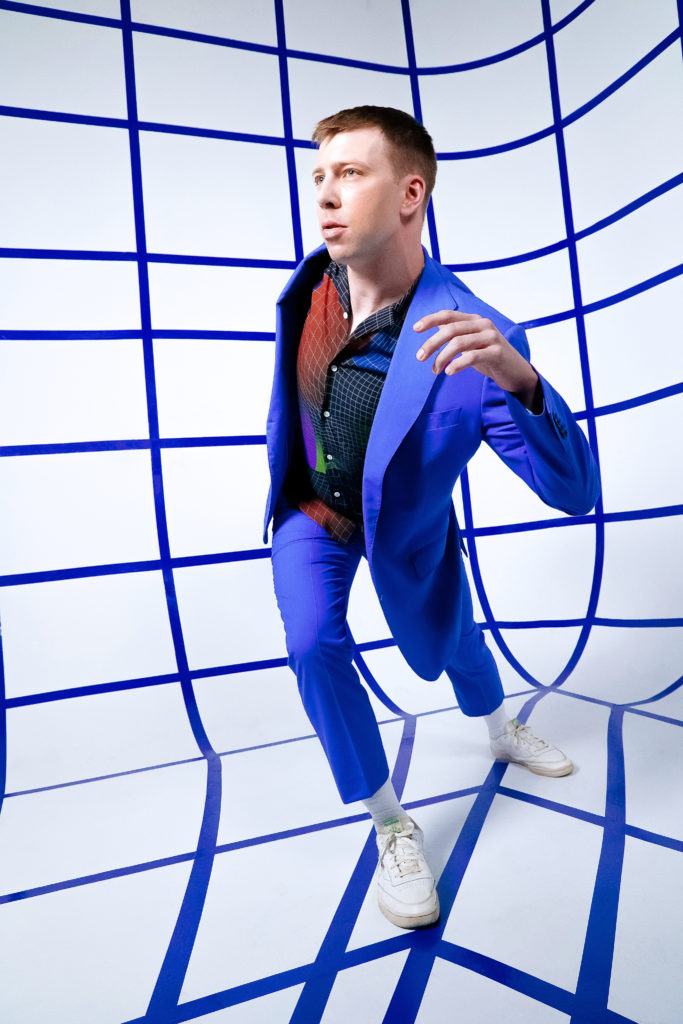Choreographer Andrew Winghart Draws Inspiration From the Spectacle of Large Ensembles
A creative and complex intelligence fills the brain of director and choreographer Andrew Winghart, known for utilizing large groups of dancers as real-life paintbrushes in movement masterpieces. Winghart has built an instantly identifiable style that shines through in his work. His Cry Me a River dance film, which features more than 30 dancers and has garnered more than 5 million YouTube views, embodies aqueous movement and became a worldwide favorite among dancers and nondancers alike. His multifaceted artistry and boundless vision have led to opportunities to choreograph for live shows like the Academy Awards telecast; compose his own music score, Prima Materia, for a project with the Philadelphia Ballet; and choreograph music videos, film collaborations and world tours for music artists like Solange, Lorde and Billie Eilish.

From a young age, I’ve always been really into big, big dance performances on video. I was just obsessed with watching. I’ve always loved the spectacle of it. It’s always been part of my life in a way that’s hard to explain, and the older I get, the more it feels very clear that I have to do this. There’s something so emotional about seeing a room of people together, moving in unison.
I really like trying to create worlds, and creating something that feels really emotional and touches on something in your soul that you can’t totally identify.
I went to college for business and film at the University of Southern California. I would go to school Monday through Friday and travel to teach at conventions from Friday to Sunday. After I graduated, I continued for two years straight with convention work. Then I realized that I wanted to shift more into the commercial world.
The original idea for Cry Me a River was to have one dancer, and shoot in a river. Then I thought, You know what? Let’s actually make a river out of dancers. I released it in January 2017, and two weeks later I got a call to choreograph for the Oscars.
I’ve been reading a lot of books on human psychology. I really enjoy Carl Jung’s works. His writings deal with a lot of symbols and imagery, and I find that they translate really well into movement because there’s a certain level of abstraction built in.
I played the piano for about seven years, and I follow a lot of inspiring Japanese jazz pianist YouTubers who post some of the most beautiful arrangements. I like practicing the piano because it’s all about humility. It’s really good for me to be bad at something, and to try to get better.
I’ve done a lot of jobs where I’m really proud of the work I’ve done, but can’t even share it with the world without getting a copyright flag. So, I figured why not just create music for the things I’m dancing to? That way no one can take my videos down, and it can challenge me to come into the creation process from a different space.
When I composed Prima Materia for Philadelphia Ballet, I didn’t want it to feel like ballet music even though I made it for a ballet. The best music makes you want to move, makes you feel something or inspires you to imagine a world of your own.
I remember watching Sonya Tayeh when I was younger, and being so inspired by her energy. There was something so intense about the way she talked about dance, and I just remember wanting so badly to take a class from her. I’ve always been inspired by how athletic and physical her movement is.
If dance wasn’t a part of my life, I’d probably be an architect. I took a six-week architecture course at Parsons six years ago, which I really liked. It’s fun to find similarities between dance and architecture. It felt very much like the same exact process to building a dance, but just with a different vocabulary, a different set of skills.







